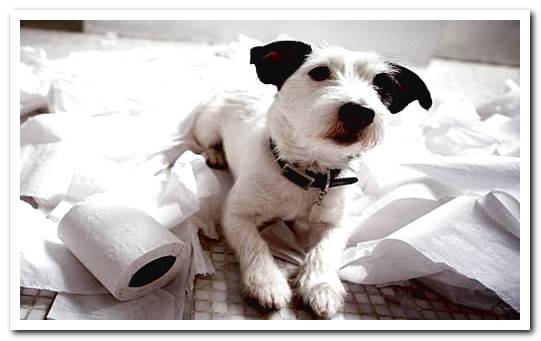
There are many cases in which when we separate from our beloved four-legged companion, he begins to cry, bark, howl, relieve himself at home or simply destroy what he finds on his way. It is not an isolated behavior, it is a derivation of the stress produced by the separation from its owner.
Solving this behavior is not really difficult, although it is a little laborious. We must dedicate time and patience, in addition to following the advice that we show below so that our dog stops suffering from that stress that is so bad for him.
Index of contents
- 1 What is separation anxiety in dogs?
- 2 My dog breaks everything when I leave him alone. Is it separation anxiety or excess energy?
- 3 Main symptoms of separation anxiety
- 4 How to avoid and / or solve separation stress in dogs
- 5 Are there alternatives to correct the behavior derived from separation anxiety?
- 6 What is the origin of anxiety in my dog?
What is separation anxiety in dogs?
It is the name given to certain behaviors developed by our dogs, which occur whenever we separate from them. It is indifferent how old they are (although it generally happens more in puppies), their breed, or that they are at home, in a garden or in a place other than their natural environment…. the symptoms are always identical or very similar.

Some dogs take two or three weeks to correct these behaviors and other dogs some months, we must be patient and we will obtain good results.
- Exercise and / or walk : Before leaving our dog alone at home, especially when we are going to be several hours away, we must take him out to relieve himself and use energy. We can take a good walk or run (or ride a bike / skate) with him, what we are looking for is to exhaust his energies a little so that he is calmer at home.
- Ignore it when leaving : Before leaving home, we should not say goodbye to our dog, sing to it, or even look at it. We will simply leave the house and leave with total calm, but if we want to say goodbye if or if … we can do it about twenty minutes before we leave, so that we do not have to do it when we leave.
- Ignore it when entering : When we get home we should also ignore our dog, at least for a couple of minutes. After that time, when we see that he is calm we can greet him.
- Break routines : Entering and leaving the house several times throughout the day is a way to break your routine. Obviously we will go out, wait a minute or two and go back inside, all without our dog and completely ignoring him.
- Distract it : Some toys such as the so-called “Kong”, are highly recommended to distract our dog and not get so nervous. These toys allow you to put food inside (homemade or for dogs), so that our dog will be very entertained with the toy trying to get food.
Are there alternatives to correct the behavior derived from separation anxiety?
If we do not have the means, time or patience to put these tips into practice and solve the aforementioned problems, we can also go to a veterinary ethologist.
An ethologist veterinaryn is somewhat similar to a psychologist for humans, able to detect the origin of problems and tell us how to correct them concretely. It is highly recommended to go to a veterinary ethologist when we detect behavior problems in our dog, whatever they may be.
In addition, if necessary, the ethologist veterinaryn could even prescribe some mild medication to help our dog not suffer so much anxiety and fear. Once the problem was corrected by performing the corresponding exercises, the medication could be withdrawn.

What is the origin of anxiety in my dog?
The origin is fear itself, for our dog we are his family, his alpha male if you prefer to call him that. Separating from his family is a real trauma for him, because he does not understand that we are going to return in a few hours, or that we have to go to work, or anything similar …
He can only appreciate that we are leaving and that produces fear, anxiety and, consequently, stress. Correcting this fear and nervousness is simple, we simply must perform exercises with the tips that we have previously explained. Have a lot of patience and be aware, with this, everything is solved.
Even if our dog does not show these symptoms, we must apply the same tips to avoid future problems of this type. Separation stress in dogs is much more common than most people suspect.
If you liked the article and found it useful, help us keep the web going! : Give “Like” or Share it on social networks 🙂 Thank you!
